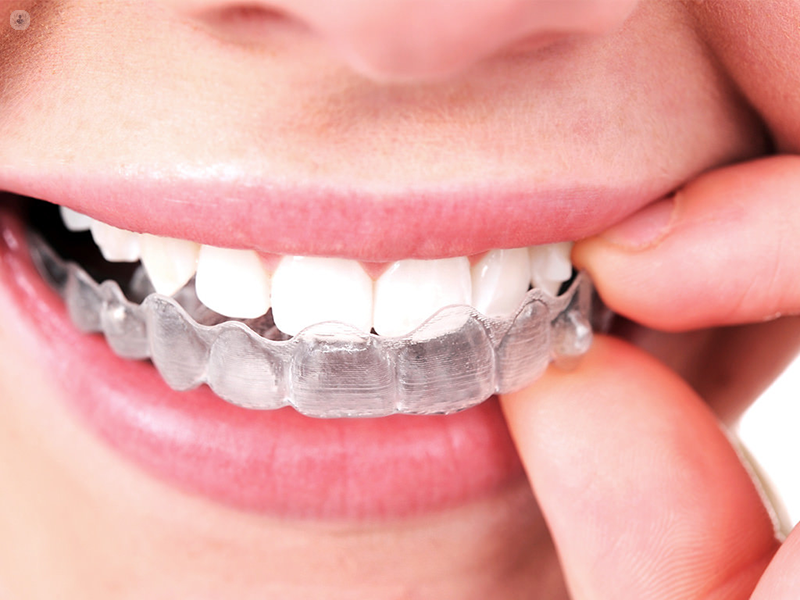How do Invisalign braces work?
Written by:Invisalign is an orthodontic system that uses aligners to straighten the teeth. Traditional orthodontic treatments use braces and wires, but invisalign uses removable aligners that are more discreet and make cleaning the teeth a lot more manageable. Dr Mark Hughes, a leading cosmetic dentist in the U.K tells us how invisalign braces work and if they can fix an overbite.

How do the invisalign braces work?
The clear, plastic aligners are elasticated and put pressure on the teeth to move them into their desired position. The patient wears each aligner for one week, before moving on to the next. After the patient wears an aligner for one week, all the teeth will move by about a ¼ of a millimetre towards their desired position. So patients go through a sequence of different aligners, changing them on a weekly basis and the teeth slowly move into a more favourable or attractive position, over the course of a few months.
The aligners are designed to be worn 22 hours a day, so they are to be worn throughout the day and night and only removed when brushing the teeth or for chewing gum and eating certain foods at meal times.
How are invisalign braces different to traditional braces?
Invisalign aligners are removable, which means that the patient can remove them and put them back in again. They are very different to traditional braces , which are glued onto the teeth and cannot be removed by the patient. This makes it easier to clean the teeth and the patient doesn’t have to worry about food getting caught as it does in metallic braces.
Can invisalign fix an overbite?
This depends on the complexity and the severity of the overbite. Invisalign is an orthodontic tool or an orthodontic appliance that a dentist or orthodontist can use to help correct the patient's bite or correct their smile. However, it depends on how complex and severe the overbite is.
For the most part, Invisalign can correct moderate to simple, sometimes even more complex overbites and over jets (wherein the top teeth overlap with the bottom teeth). The patient will need to be properly assessed to ensure that Invisalign is right for their particular case, but for the most people Invisalign is an excellent solution to fix an overbite.
If you would like to straighten your teeth or you have an overbite that needs addressing, your best option is to consult with a specialist for a thorough assessment.


